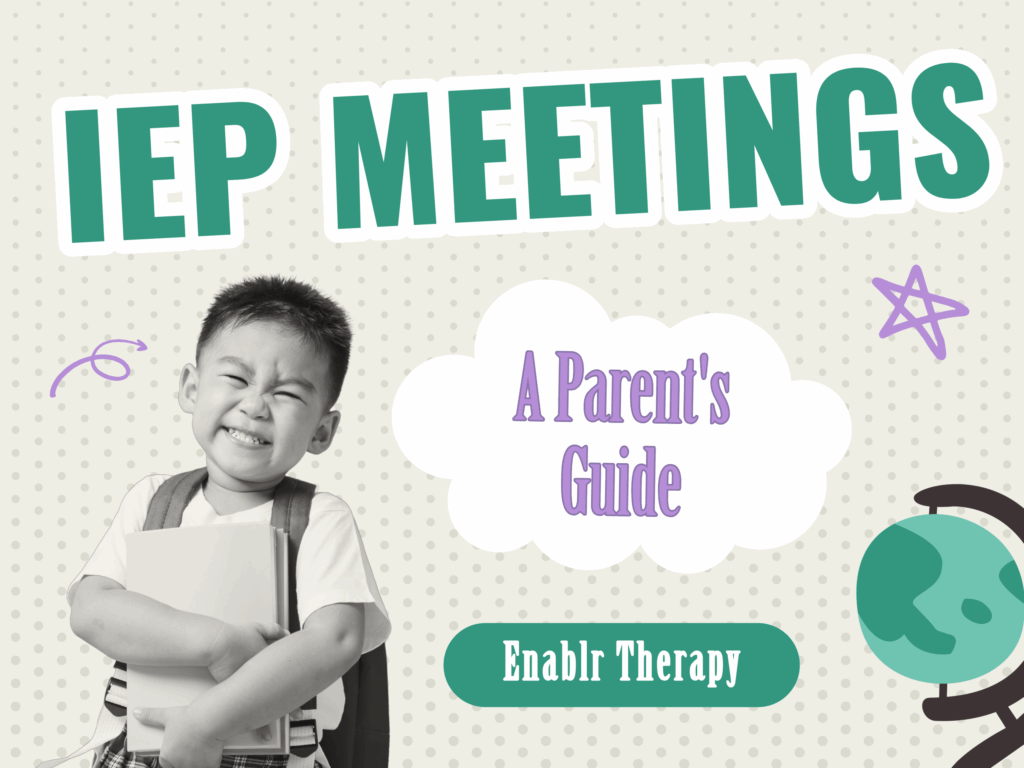Parents, we all want to see our child(ren) succeed and grow in independence. For parents of children with special needs, participating in the school’s educational IEP team and monitoring educational progress is a vital part of that success and growth.
An Individualized Education Program (IEP) is a legal document that outlines the special education services and supports that a child receives in school. The goal is to ensure that the child receives the necessary accommodations to succeed academically and socially. As a parent, you are a key advocate for your child. Your knowledge of their strengths, challenges, and needs is greater than anyone else. Your input in the IEP process is crucial to ensuring that the school provides the right support that is tailored to your child. But participating in an IEP meeting can be intimidating or confusing.
This guide is designed to help parents understand how to prepare for the IEP meeting, collaborate effectively with the educational team during the meeting, and follow up afterwards.
Step 1: Preparing for the IEP Meeting
Prior to the meeting, there are several things that you can do that will help you share important information about your child with the team.
✅ Review the Current IEP (if applicable)
Read over your child’s current IEP and any progress notes. Identify areas where your child has grown and different goals or services might be needed. On the flip side, also Identify areas where progress has not been made and more or different support is needed.
✅ Gather Important Documents
Share any private therapy reports (e.g., speech, occupational therapy, behavioral therapy, etc) medical evaluations, or other related educational documents with the team prior to the meeting.
✅ Consider Your Child’s Strengths and Needs
Take some time to consider your child’s individual strengths and needs. What do they do well that can be built on? Is there an area that they struggle with that is impacting other learning or school based skills that should be addressed? How do these strengths and needs align with what you see on their current IEP if they have one?
✅ Know Your Child’s Rights
Review your parental rights prior to the meeting. Federal law mandates that the school provide you with a copy of these rights prior to the IEP meeting. If there are concerns that your child may not qualify for special education services, you may want to explore options for a 504 plan.
✅ Communicate with Teachers & Specialists
You may want to share your reflections on your child’s strength and needs with your child’s teacher or therapist prior to the meeting so that they also have time to reflect and gather current data related to those areas.
✅ Consider Bringing an Advocate or Support Person
If you feel overwhelmed, you can bring a friend, advocate, or therapist to the meeting.
Step 2: What Happens During the IEP Meeting?
Your child’ s case manager will coordinate a team meeting that includes a general education teacher, special education teacher or provider, a school district representative (LEA- Local Educational Agency Representative), any related service providers like speech language pathologists, occupational or physical therapists, or mental health counselors, an interpreter if needed, and of course, you, the parent. Typically as students become teenagers, they will also start attending their IEP to encourage self advocacy.
IEP meetings can be held in person or remotely. During the IEP meeting, the team will discuss:
- Your Child’s Present Levels of Academic Achievement and Functional Performance (PLAAFP): This includes information on your student’s strengths and needs in academic areas like math, reading, and writing, as well as functional skills like social interactions, behavior, daily living skills, and communication. For each area covered, an impact statement will be developed to state how the child’s abilities affect their progress in the educational setting.
- Goals: Progress on current goals will be reviewed. Recommendations for new goals will also be presented for team consideration. Goals should be specific, measurable, and achievable. It is OK to ask for goals to be adjusted to to suggest alternative goals during the meeting. Don’t be afraid to speak up.
- Accommodations & Modifications: These are changes that are made to help a student access the curriculum without altering the learning expectation. They help thestudent to demonstrate their knowledge and participate in school on an equal level with their peers. Examples of accommodations may include text to speech instead of reading, dictating response instead of writing, extending time for tests and assignments, sensory supports like noise canceling headphones or alternative seating, and organizational supports like visual schedules, timers, and use of checklists.
- Services: Duration and frequency will be determined for each academic and related service that your student will receive.
- Placement: Where your child will receive services (general education, special education, or a mix of both).
A lot of information is shared during an IEP meeting. Feel free to take notes, share your perspective, and ask curious and clarifying questions. It is important that you understand your child’s educational plan. And don’t feel rushed. Although meetings are generally scheduled for a set amount of time, it can be continued into a second meeting if needed.
📌 Questions that should be answered during the meeting:
- How is my child progressing toward their goals?
- What interventions and supports have been effective?
- Are there additional services or accommodations or a change in services or accommodations that might help my student progress further?
- How can the team work together between school and home to support this student?
Step 3: After the IEP Meeting
Following the meeting, your child’s case manager will finalize the IEP documentation. It is important to review the document to ensure that all of the information is accurate, especially goals and services. If you find any errors, reach out to your case manager in writing to request corrections or additions as necessary.
You should be provided a progress report that regular reporting periods that reviews your child’s progress on each goal. Reviewing these reports and staying in touch with your child’s teacher and therapists will help you to stay informed on your child’s educational achievements. If at any time, you have questions or feel that adjustments are needed to your child’s IEP, you can request a meeting. Maintaining a collaborative relationship with the entire IEP team will help your child make the most progress.
Final Tips for Parents
💡 Stay Positive & Collaborative – You and the school are on the same team working toward your child’s success.
💡 Trust Your Instincts – If something doesn’t feel right, ask questions, listen, and request changes as needed.
💡 Keep Records – Maintain a file with all IEP documents, emails, and progress reports.
💡 Know Your Rights – If you disagree with the IEP, you have the right to request mediation or a due process hearing. Refer to your procedural safeguards guide for more information.
If you have a child or student who may benefit from therapy services, Enablr Therapy can help. Contact us for more information.




